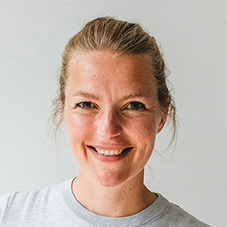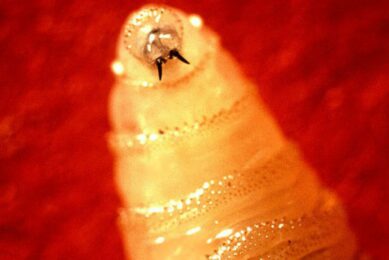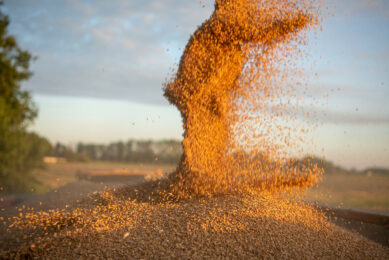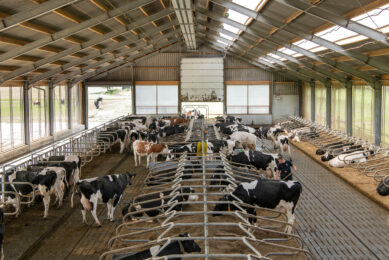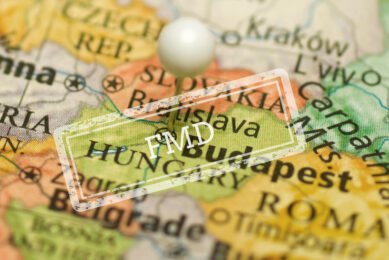Dubai farm to focus on good quality fodder and animal cooling
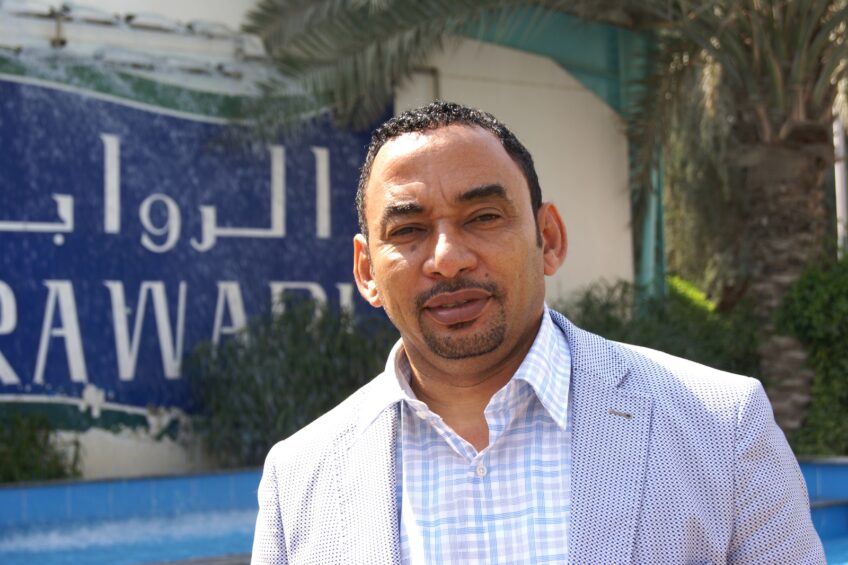
Al Rawabi Dairy, located in Dubai area, is able to produce a top production of 36 litres per cow per day. Considering that temperatures can reach 50 degrees in this part of the world, this is a true achievement.
Al Rawabi was founded in 1989 in Dubai, United Arab Emirates (UAE). Since then, the company has been producing fresh milk at its farm in Al Khawaneej, near Dubai, and is named the biggest dairy producers in the UAE. The company, which operates as a subsidiary of Emirates Rawabi, also produces juices (over 150,000 litres per day), yoghurts and functional dairy drinks (e.g. vitamin D milk). Ayman Salah Boshara is the current farm manager and explains that many things have changed since they started 25 years ago.
Milking equipment from Boumatic
“In 1989 the farm started with 500 cows, which we imported from Germany, but now we have grown to a whopping 12,500 cows today, of which 8,000 milking cows and around 5,000 young stock (young heifers and pregnant heifers),” Boshara explained. In 2013, the farm was renovated and 3,000 cows were added to the herd. The renovation included a new cold store and a new pasteurisation line at the plant. The cows are milked three times a day. The milking equipment in the three milking parlours (parallel milking parlour double 45) are supplied by Farm Service, a company in the Netherlands and dealer of US milk equipment company Boumatic. Boshara: “We aim for high technology in our milking parlours. The machinery we use is connected with the software tool Farmcom and we use automatic back flushing.” All in all, this results in a gigantic production of 275,000 litres of dairy products every day.
Animal showers and water recycling
Dubai area is pretty much a desert, with humidity levels reaching 98% and temperatures up to 50 degrees in summer time. Considering that cows, originating from Europe are not well equipped to deal with heat, it is of utmost importance to keep the animals cool and healthy. Managing heat inside the barns is done by covers at the outside of the barns and ceiling fans that create a mist. Only then, cows feel comfortable enough to produce high amounts of milk each day. Water is scarce, so need to be sourced locally. There are 40 wills on the farm. The water is treated, cleaned and cooled to 20 degrees (from 36 degrees) to serve as fresh drinking water. All water is recycled, which comes down to 3000m3 water every day. Farm manager Boshara: “10 years ago we had no cooling system at all. Over the years, we made huge improvements in the housing of the animals, which really benefited the milk production and animal welfare.”
Quality of feed on top of mind
Apart from proper cooling of the animals and dealing with the heat, the quality of the feed is also very important. When temperatures rise, animals tend to eat less, and hence drop in milk production levels. Boshara explains that all the feed has to be imported. “We import sundried alfalfa hay from Sudan, South Africa and US. From Sudan we get the highest quality, measured in a lower NDF/ADF and higher protein levels. On the farm we feed 12 different rations. The farm uses Digistar feeding wagons. Every day, an updated feed sheet is send to the computer. “We know exactly was is used and what is left. We try to work as efficiently as possible with the high quality fodder that we import”, according to the farm manager.
Change bull every year
In terms of breeding and health, the Al Rawabi farm has a solid strategy. Boshara: “We concentrate on the heifers, as they have only 4-5 lactations before the animals are culled. In January this year, we started to use sexed semen for the heifers in winter times. Semen comes from Alta Genetics bulls. This approach has increased the female offspring from 50% to 85%. Bull calves are sold at 15 days, and sold for 300 US dollars per head. “We rotate the bulls every year and we plan our own breeding strategy. You simply cannot copy paste the breeding strategies from other parts of the word to our area. All farms are different,” explains Boshara. The farm also aims to detect mastitis and lameness as early as possible, monitored closely by the 5 vets and 15 veterinary assistants. But all staff (220 in total) and trained to detect the early signs of disease.” The staff is also trained to work at each unit/department at the farm. They rotate every six months. The farm also has a laboratory, where semen and milk samples are tested. Cows with a high SCC are the last ones to enter the milking parlour, to prevent contamination. The efforts are payed off. The clinical mastitis incidence is 0.65%, which is very low.
Expanding exports to more countries
The farm receives a fixed price for the milk, as milk prices are controlled by the government. This is at least 2.10 dirham per litres (€0.52). The company earlier announced that the sales have grown by 15% in the first quarter of 2015. Al Rawabi holds a 3rd share of the UAE’s dairy market and is the largest producer in the Emirates. Nevertheless, the company is hungry for more growth. They eyes are on buying another dairy farm in Abu Dhabi to increase the number of dairy cows. “We are expanding our sales to countries outside the UAE like Sudan, Uganda and Ethiopia.” This trip was organised by Global Dairy Farmers, during the VIV MEA. It was the first time, that VNU Exhibitions organised a VIV in this region.
According to research from the market bureau Mordor Intelligence (august 2015), the dairy market in the UAE consists of retail sales of milk, soy products, spreadable fats and yoghurt. The United Arab Emirates dairy market had total revenues of $657.9m in 2012, representing a compound annual growth rate (CAGR) of 5.7% between 2008 and 2012. Market consumption volumes increased with a CAGR of 4.3% between 2008 and 2012, to reach a total of 184.4 million kg in 2012. The performance of the market is forecast to grow with an anticipated CAGR of 4.6% for the five-year period 2012 – 2017, which is expected to drive the market to a value of $825.5m by the end of 2017.
Join 13,000+ subscribers
Subscribe to our newsletter to stay updated about all the need-to-know content in the dairy sector, two times a week.














